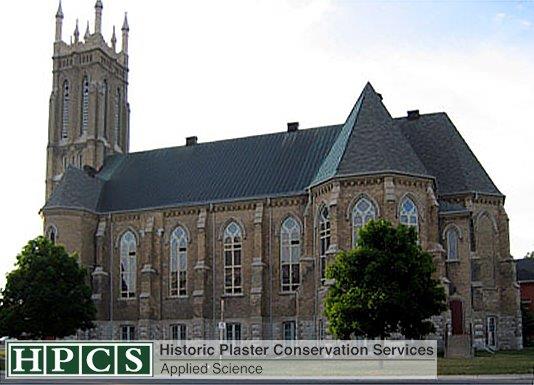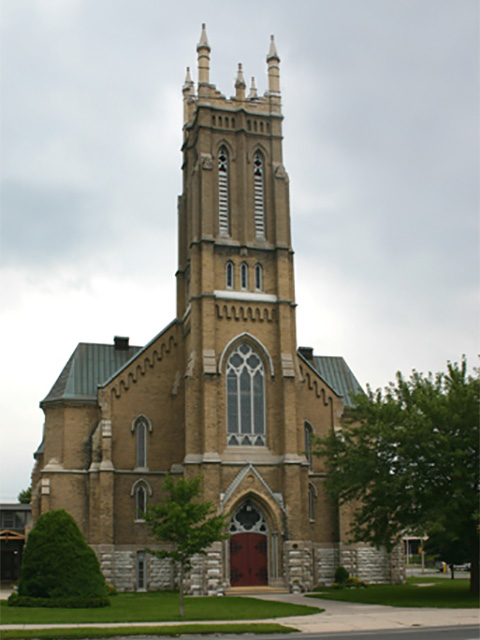Peterborough, Ontario (1843)
The Building:
Closely resembles the Metropolitan Methodist Church in downtown Toronto. Both buildings were designed by architect Henry Langley. The formal opening took place on Christmas Day 1875. In 1891, a 40-foot church tower was completed with four large pinnacles at the corners and four smaller pinnacles in between. High on the tower front is a cast of John Wesley’s face.
Project Synopsis:
HPCS was retained to assess the condition of the wood lath and plaster ceiling. The attic inspection revealed that over 40% of the ceiling area and more than 30% of the structural support of the ceiling had been lost due in part to water infiltration and mechanical damage. In this case, the careless installation of fiberglass insulation had contributed significantly to the damage.

With a long history of water infiltration problems and the presence of thick insulation with no vapor barrier, the question of what was causing serious paint peeling from the interior surface warranted the attention of a building envelope specialist, Chris Borgal of Goldsmith Borgal & Associates.
Research of the church records indicated that the Wardens had repainted the ceiling several times in living memory, most recently some six or seven years prior. The paint was pealing, leaving bare plaster visible from the floor. This peeling was a paint adhesion problem based on the first commercial paints having been applied over the old calcimine paint of the 1870’s. In some locations, the paint bonded well or well enough, but in other areas, there was no bond at all. Large bubbles of un-bonded paint eventually cracked and curled into unattractive peels.
Repairs that had been tried and failed included scraping the loose paint back and applying oil based primer to the affected area, followed by touch up painting. Usually these repairs would outlast the warranty period or the collective memory of members of the building committee, but ultimately the adhesion problem would return and more peeling would occur.
With corroboration from the architect, the decision was taken to remove the paint and start with redecoration from base plaster.
The project was a great success with the interior decorative painting completed by artist Andrew Kwiecinski.

